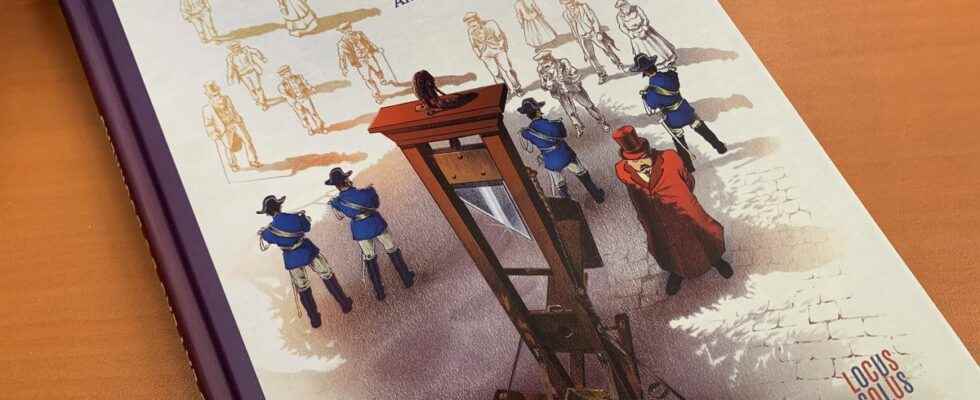It’s the start this Friday of the 41st edition of the comic book festival “Quai des Bulles” in Saint-Malo. For the occasion Olivier Keraval Rennes author presents his new graphic novel entitled “In the skin of the executioner” published by Locus Solus.
France Bleu Armorique: After Hélène Jégado, the poisoner from Rennes, you are talking to us this time about Anatole Deibler, also from Rennes, who was a famous executioner until his death in 1939. Yet people are often unaware of his existence …
Olivier Keraval : Yes I like waking up, dusting off buried stories.
You worked from his notebooks that this executioner wrote during his career
Yes, the base is his notebooks, they are in a private collection, so I didn’t have access to them. On the other hand, many extracts have been published. Many books have been devoted to Anatole Deibler. So that’s my base of work, plus all the press that actually covered all the criminal cases he was involved in.
And what did you like about this story, about its journey?
There is both Anatole Deibler himself and the period he is going through. Because you have to understand that I am certainly talking about the executioner, but it is a gateway to history, to great history. So the big story appeals to me. And then a character like that, as you said, forgotten. Well, I wanted to understand the psychology of the character. Why he wanted to practice this very special profession.
Anatole Deibler was born in 1863 in Rennes, died in 1939 when he was going to return to Rennes for an execution. The graphic novel takes us from the end of the 19th century to the First World War…
Yes, the great story is a common thread that runs through this period. He is a privileged witness because of his function, because of what he is. It is a fabulous, fantastic material. Afterwards, it is a question of synthesizing, of explaining by rethinking a little since I also fill historical voids, I try to respect the memory of the character. Also, it’s about not betraying him and telling his life and the great story.
In these notebooks, he also noted the number of these executions. Quite an impressive number…
As you said, he was to come and perform the 396ᵉ in Rennes. It’s a huge score. It’s a “prize” even if he didn’t boast of killing much. He killed a lot legally, always because it’s all still extremely legal. There is nothing illegal.
It must also be said that the function of executioner took place in his family. His father and his grandfathers were executioners before him. Is that also what interested you?
Completely. You have to understand that the life of an executioner is often very clannish. They are among themselves, they recruit among themselves sons-in-law, nephews, cousins, sons. And There you go. It’s a very particular function.
Anatole Deibler is also going to live in Paris like his father…
His father is already there, he will join him afterwards. He will make part of his early career in Algeria. He returns and is appointed to his father before taking his place. At the time, the office was centralized in Paris after 1870.
You also mention his anxieties
Yes, of course, constantly. One cannot kill innocently, even if he kills legally. He is anxious. It’s awful. His father has gone mad. Besides, by dint of killing.
You are working with Luc Monnerais as an illustration for the fourth time. Do your works complement each other well?
Yes, we met about ten years ago. Now, we continue to evolve together on this project. It was once again obvious for the black and white which refers to all this iconography, end 19ᵉ, beginning 20ᵉ. So, we’re off to that. A rather fruitful collaboration.
